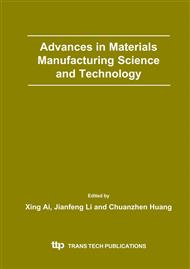p.162
p.167
p.172
p.178
p.183
p.187
p.192
p.196
p.201
Modern Analysis and Design for the Generalized Lubrication System of Internal Combustion Engine
Abstract:
More precise analysis and design of generalized lubrication system with the research results of modern lubrication theories are the effective measures to improve the efficiency and reliability of internal combustion engine. Through discussing and summarizing the development status in this field, a set of systematic methods of integrated analysis and design, and general rules are proposed in this paper. Technical measures for lubrication design of internal combustion engine are given. The database of lubrication design and condition monitoring is suggested to found. The best dispose of lubrication system design will be obtained through modeling, deducing control equation, and numerical simulation, improving and optimizing the coupling relationship among the capacity design, structure design, and lubrication design. Such, the modern lubrication design can be combined with strength design at the period of concert design and scheme design period really.
Info:
Periodical:
Pages:
183-186
Citation:
Online since:
December 2004
Authors:
Price:
Сopyright:
© 2004 Trans Tech Publications Ltd. All Rights Reserved
Share:
Citation:


